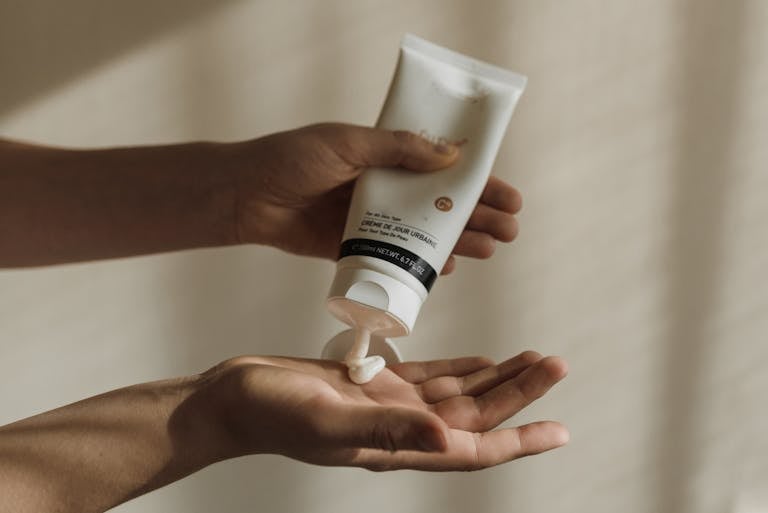With a basic understanding of your skin type, you can tailor your skincare routine to meet your specific needs. Identifying your skin type at home is a simple process that can save you time and money while enhancing the effectiveness of your products. By observing your skin’s characteristics, such as oiliness, dryness, and sensitivity, you can gain insight into the proper care it requires. In this guide, you will learn step-by-step methods to help you uncover your unique skin type, ensuring your complexion looks and feels its best.
The Science of Skin: What Determines Your Skin Type?
The Role of Genetics in Skin Composition
Your skin type is largely determined by your genetic makeup, which dictates the production of sebum, the presence of moisture levels, and the thickness of your skin. Genetic factors influence the size and activity of sebaceous glands, which play an integral role in oil production. For instance, if your family has a history of oily skin, it’s likely that you will experience the same condition. Similarly, those with a family history of dryness may find themselves dealing with skin that lacks moisture and elasticity.
Moreover, the genetic predisposition to certain conditions, such as eczema or rosacea, can manifest as specific skin types. These inherited traits affect how your skin responds to environmental stressors. For example, if your genes favor a more resilient skin type, you might handle changes in climate or products better than someone whose skin is genetically predisposed to sensitivity and irritation.
Environmental Influences on Skin Characteristics
Your environment plays a significant role in shaping your skin’s characteristics. Factors such as climate, pollution, and lifestyle choices can drastically influence the condition of your skin. For example, individuals living in arid regions may experience increased skin dryness due to the lack of humidity, whereas those in humid climates might deal with excess oil and acne. Urban dwellers are often exposed to higher levels of pollution, which can lead to premature aging and other skin issues.
Moreover, diet and hydration directly affect your skin’s appearance. Nutrient deficiencies, especially in vitamins C and E, can manifest as dullness and uneven texture. Regular intake of water keeps your skin hydrated, enhancing elasticity and overall health. Even habits such as smoking and the frequency of sun exposure can predispose you to skin types that are more susceptible to damage and aging.
The Five Skin Types: Beyond Just Dry or Oily
Understanding your skin can often feel like trying to decipher a complex code. It’s not just about whether your skin is dry or oily. There are five primary skin types that each have specific characteristics, and knowing yours can make a world of difference in your skincare routine. Below is a breakdown of each type:
| Skin Type | Characteristics |
|---|---|
| Sensitive Skin | Prone to redness, itching, and irritation. |
| Oily Skin | Shiny appearance, enlarged pores, and frequent breakouts. |
| Dry Skin | Tightness, flakiness, and rough texture. |
| Combination Skin | Mix of oily and dry areas, often with an oily T-zone. |
| Normal Skin | Balanced moisture levels, few imperfections. |
Sensitive Skin: Signs, Symptoms, and Triggers
Experiencing frequent redness, itchiness, or irritation can signify that you have sensitive skin. This may manifest as reactions to skincare products, environmental factors such as temperature changes, or ingredients commonly found in cosmetics. Often, sensitive skin can be attributed to a decreased barrier function that causes it to react more intensely to external stimuli.
Triggers can vary widely for individuals. For some, harsh chemicals in skincare products can lead to flare-ups, while others might react to changes in weather or even stress. It’s vital to choose gentle products that are free from alcohol, fragrances, and parabens to minimize the risk of irritation.
Oily Skin: Causes and Typical Manifestations
You may find yourself battling a shiny forehead, nose, and chin if you have oily skin. This type is characterized by the overproduction of sebum, which can lead to clogged pores and breakouts. The hormonal fluctuations related to puberty, menstrual cycles, or stress can often be the root cause of increased oiliness.
Large pores are another hallmark of oily skin. In addition to shine, it can be frustrating to deal with blackheads and acne. An effective skincare routine that includes oil-free moisturizers, exfoliants, and specific cleansers can help manage the appearance and texture.
Still, understanding oily skin involves knowing that over-cleansing can sometimes worsen the situation. In contrast to the belief that drying out the skin will lead to less oil production, it can actually cause your skin to produce even more oils in response.
Dry Skin: Identifiers and Common Misconceptions
Dry skin often feels tight, flakey, or rough to the touch. People with this skin type may notice a lack of luminosity, especially in colder weather or environments with low humidity. The skin may even crack or become irritated with conditions such as eczema or psoriasis. It’s important to recognize that dry skin can be caused by various factors, including genetics, environmental conditions, and lifestyle choices such as diet and hydration.
A common misconception is that using heavy creams and oils alone can solve dry skin. In reality, establishing a consistent moisturizing routine alongside a gentle cleansing regime is critical. Providing your skin with important fatty acids and hydrating ingredients can help to restore its barrier and prevent moisture loss.
Combination Skin: Balancing the Extremes
Combination skin can be one of the trickiest types to manage due to its contradictory nature. You might have an oily T-zone, while your cheeks and perimeter of your face feel dry and sensitive. This duality can challenge your skincare regimen, as products effective for one area might exacerbate another.
Finding the right balance requires you to tailor your products intentionally. Using lightweight, gel-based moisturizers for the oily parts while employing thicker creams for drier zones can create a harmonious routine that addresses all your skin’s needs.
Normal Skin: The Ideal Yet Elusive Type
Normal skin has a balanced level of moisture and oil, showing few imperfections and a healthy texture. If you have normal skin, you likely experience minimal sensitivity and are less prone to breakouts, allowing for greater flexibility in product use. Despite its ideal nature, this skin type can be overlooked, assuming it doesn’t need as much care or attention.
Understanding the fundamentals of maintaining its balance will ensure you continue enjoying this skin type. A regular cleansing, moisturizing, and sun protection regimen can keep your skin healthy and radiant.
This breakdown not only highlights the diversity in skin types but also emphasizes the distinct needs associated with each. Recognizing where you stand in this spectrum makes it easier to choose products and routines that work best for your unique skin.
DIY Methods: The Best Techniques to Assess Your Skin Type
The Bare-Faced Test: A Simple Approach
The Bare-Faced Test requires minimal effort and is a straightforward way to identify your skin type. Begin by cleansing your face with a gentle cleanser to remove all makeup, dirt, and oil. After cleansing, pat your face dry and avoid applying any products. Let your skin rest for about an hour in a comfortable environment. During this time, pay attention to how your skin feels. Is it tight or dry? Do you notice any shine on your forehead, nose, or chin? If so, you might have oily skin. If your skin feels comfortable without stark dryness or oiliness, you may have a normal skin type.
For those feeling dry or experiencing flakiness, consider that you could have dry skin. This simple analysis taps into your skin’s natural state, allowing you to gauge its behavior without the influence of creams or serums. Keep a journal of your observations and combine these findings with further assessments for a comprehensive understanding.
The Blotting Paper Method: A Detailed Assessment
The Blotting Paper Method involves observing how your skin interacts with a simple blotting paper, giving insight into oil production. To execute this test, take a sheet of blotting paper and press it gently on various areas of your face—forehead, nose, chin, and cheeks. If the blotting paper picks up excess oil from the forehead and nose, but little to none from your cheeks, you likely have combination skin. However, if it absorbs oil from all areas, your skin type may lean towards oily.
If the paper comes away largely dry with minimal oil residue, this suggests that your skin is dry or normal. For more accuracy, repeat this test on different days to account for any fluctuations in oil production due to factors like weather or hormonal changes, and document those findings for better clarity.
This quick assessment gives you a snapshot of your skin’s oiliness throughout the day, revealing both your skin’s needs and tendencies. Analyzing the results over time can highlight patterns in your skin’s behavior, allowing you to tailor your skincare routine accordingly.
The Wash Test: Observing Changes and Reactions
The Wash Test involves cleansing your skin in a specific way, allowing you to observe how your skin reacts. Start with a gentle cleanser, applying it to your face to remove impurities while being careful not to use products with strong formulas. Rinse thoroughly, then leave your skin bare and untouched for at least an hour. Throughout this period, pay attention to sensations of tightness or any greasiness that may develop. If you notice tightness and discomfort, your skin might be classified as dry. Conversely, if your skin appears oily shortly after washing, you may have oily skin.
During the two-hour observation window, take note of any fluctuations in your skin’s feel. If your cheeks begin to feel dry and tight, while your forehead becomes shiny with oil, this is indicative of combination skin. This method not only unveils your skin type but also allows a glimpse into your skin’s reaction to environmental factors, whether it be humidity or heated indoor spaces.
Key Indicators to Look for When Analyzing Your Skin
Texture and Pore Size: The Visual Clues
Understanding your skin’s texture and the size of your pores provides clear insights into your skin type. You might notice that if your skin feels rough or bumpy, it could indicate a lack of moisture or the presence of dead skin cells. Conversely, a smooth texture often signals well-hydrated skin. Observe the pores on your cheeks, nose, and forehead. If they appear enlarged, you might be dealing with oily skin. Smaller, less visible pores often characterize dry or normal skin types.
Examining your skin for dry patches or areas that seem excessively oily can also help in identifying your skin type. Combination skin typically exhibits both characteristics, with dryness in some areas and oiliness in the T-zone. Depending on the overall feel and appearance of your skin, you can start to narrow down the category that best represents your skin.
Sensitivity Reactions: Red Flags to Note
Paying attention to how your skin reacts to different products or environmental changes can be enlightening. If your skin quickly turns red or feels itchy after applying certain skincare items, you may have sensitive skin. Common triggers include fragrances, alcohols, and certain preservatives found in cosmetics. Keep an eye out for any persistent rashes, dryness, or flakiness as these might indicate a heightened sensitivity.
The sun, weather changes, or even stress can cause reactions in sensitive skin. If you notice reactions occurring consistently in response to these factors, it’s a significant indicator that your skin may be sensitive or reactive. Consider documenting these reactions in a skincare journal to identify patterns and better understand your skin’s behavior over time.
Hydration Levels: How to Measure Moisture
Measuring your skin’s hydration levels can be quite simple. Begin by washing your face with a gentle cleanser and patting it dry. Wait approximately one hour before assessing your skin. If it feels tight or looks flaky, dehydration could be an issue. On the other hand, if your skin appears plump and dewy, it suggests adequate moisture levels. Additionally, you can use a hydration meter, which is a tool designed specifically to measure the moisture content of your skin and give you precise readings.
Another method to evaluate hydration involves the pinch test. Gently pinch your skin on the back of your hand or cheeks, and observe how long it takes for your skin to return to its original shape. If it snaps back quickly, you likely have hydrated skin. However, if it takes longer, that could indicate dryness or a need for more moisture-rich products.
Common Misconceptions: Debunking Skin Type Myths
Oily Skin Doesn’t Need Moisturizer: The Truth
Your skin might feel oily, and you might think that adding moisturizer will only worsen the greasiness. However, this is a misconception. Oily skin can lack hydration, leading it to produce even more oil in a misguided attempt to compensate. Using an appropriate moisturizer, ideally one that is lightweight and non-comedogenic, signals your skin that it doesn’t need to overproduce oil, promoting balance. Ingredients like hyaluronic acid or glycerin can be particularly beneficial without adding excess shine.
By applying moisturizer daily, you can maintain skin’s hydration levels, which can actually help in controlling oiliness over time. This doesn’t mean slathering on heavy creams; instead, opt for gel-based formulas that hydrate your skin without adding extra heaviness. Maximizing moisture can help you achieve the healthy glow you desire without the unwanted greasiness.
Sensitive Skin is Always Dry: Clarifying Misunderstandings
While sensitive skin often experiences dryness, it can also be oily, resulting in a common misunderstanding about its nature. Sensitive skin is typically reactive, meaning it can respond to various stimuli with redness, irritation, or breakouts. Oftentimes, you may fall into the trap of thinking that using heavier products or moisturizers will resolve the dryness. However, this can exacerbate your skin’s sensitivity due to ingredients that may provoke irritation.
Instead, focus on recognizing your skin’s specific triggers—whether they be environmental factors, certain skin care ingredients, or stressors. A gentle, soothing, and hydrating routine is vital, employing products that are specifically formulated for sensitive skin to avoid exacerbating issues.
Skin Type is Fixed: Why That’s a Myth
Your skin type isn’t set in stone; it can change due to numerous factors, including age, hormonal shifts, diet, and even climate. For example, teenagers often sport oilier skin due to hormonal changes but may find their skin becomes drier as they enter adulthood due to shifts in hormone production or environmental conditions. Acknowledging that your skin can change over time means that your skincare routine must evolve as well. Periodic assessments of your skin will help you tailor your products accordingly and maintain the best results.
Additionally, factors like stress, medication, and the approach you take to manage your skin can all influence its characteristics. Committing to regular evaluations and not adhering strictly to any one label ensures you provide your skin the best care tailored to its current needs.
The Importance of Identifying Your Skin Type: Beyond the Basics
Tailoring Your Skincare Routine for Optimal Results
Determining your skin type allows for a targeted approach to your skincare routine, leading to enhanced results and healthier skin. For instance, if you identify as having dry skin, you can prioritize rich, hydrating creams and serums that contain ingredients like hyaluronic acid and ceramides. Conversely, those with oily skin may benefit from lightweight, non-comedogenic products that help regulate oil production without clogging pores. By customizing your routine based on your unique skin type, you not only improve the efficacy of your products but also reduce the chances of adverse reactions, such as irritations and breakouts.
Adapting your skincare regimen to match your skin’s needs is not a one-size-fits-all solution. With a clearer understanding of your skin type, you can pinpoint additional concerns like sensitivity or acne. This deeper analysis helps in selecting the right exfoliants, treatments, and even the frequency of product use, allowing you to maintain a balanced and effective skincare strategy tailored specifically for you.
The Impact on Long-Term Skin Health and Aging
Identifying your skin type has a significant effect on long-term skin health and the aging process. Tailored skincare not only addresses immediate concerns but also lays the groundwork for maintaining a youthful appearance as you age. For example, while those with oily skin may require less moisture, they must still implement specific anti-aging products that prevent the buildup of excess oils that can lead to acne, which in turn can cause scarring and accelerated aging. Additionally, dry skin types need targeted hydration along with antioxidants to combat environmental stressors that can lead to premature aging.
The foundation of a healthy skincare routine built upon the knowledge of your skin type also fosters the skin’s natural functions, such as its barrier role and cell turnover rate. Adjusting your approach based on skin type allows you to utilize forms of sun protection and hydration that are more effective for your needs. Over time, these customized strategies can significantly influence your skin’s resilience against age-related issues.
Focusing on the specific needs of your skin type enables you to effectively address both short-term imperfections and long-term complications. Research suggests that individuals who tailor their skincare see improved skin texture and fewer issues related to dryness, oiliness, or sensitivity, thus creating a healthier canvas over the years. By understanding your skin type, you can prevent issues before they arise, further promoting a vibrant and youthful appearance as you age.
When to Seek Professional Help: Recognizing the Signs
Persistent Skin Issues: What They Might Indicate
Facing ongoing skin problems such as persistent acne, eczema, or unexplainable rashes should prompt immediate evaluation. If you notice redness, swelling, or inflammation that doesn’t seem to improve with over-the-counter treatments, it could indicate an underlying health condition. Chronic skin issues, like psoriasis or rosacea, may require specialized treatment and management plans. Delaying consultation can exacerbate these conditions, leading to further discomfort and potential scarring.
Additionally, if your skin appears to have developed a new growth or changing moles, these changes should not be taken lightly. Skin cancer can manifest in various forms, such as asymmetrical moles or irregular borders. The sooner you address these changes, the higher your chances of early diagnosis and effective treatment. Make a note of any patterns in your skin that concern you, as these can provide valuable information during your appointment.
The Role of Dermatologists in Precise Diagnosis
Consulting a dermatologist can add clarity to your skin concerns, offering a diagnostic approach grounded in experience and expertise. These professionals are equipped to conduct detailed examinations, assess your skin’s condition, and recommend appropriate treatments tailored to your specific needs. For example, dermatologists can perform skin biopsies to analyze cells and determine if any abnormalities exist. They also have access to advanced technology and resources to monitor your skin’s health effectively.
Dermatologists conduct a comprehensive patient history alongside a physical examination. This process often helps to uncover previously unnoticed factors contributing to your skin issues, such as hormonal changes, dietary influences, or lifestyle habits. Your doctor may also recommend certain tests to rule out systemic issues that could be affecting your skin health, ensuring that every aspect of your condition is considered before deciding on a treatment plan.
Conclusion
The process of identifying your skin type at home is both simple and rewarding. By employing methods such as the Bare-Faced Test or Observational Techniques, you can gain valuable insights into your skin’s characteristics, whether it is oily, dry, combination, or sensitive. Understanding your skin type not only empowers you to make informed decisions about your skincare routine but also helps in selecting the most suitable products for your unique needs. Taking the time to analyze how your skin behaves in various conditions can yield significant benefits for your overall complexion.
With this newfound knowledge, you can tailor your skincare regimen effectively, ensuring that it complements your skin’s natural tendencies. Armed with the right information, you can confidently address issues such as excessive oiliness or dryness, paving the way for healthier, more radiant skin. Incorporating the tips shared in this guide will enhance your self-care routine and lead to a deeper understanding of how to treat and nurture your skin, ultimately resulting in a more personalized and effective approach to skincare.







